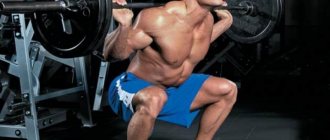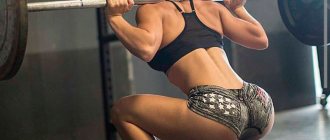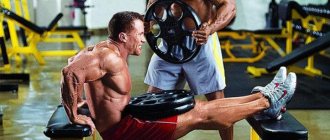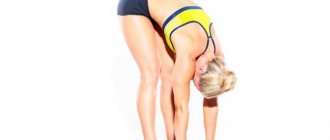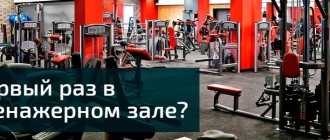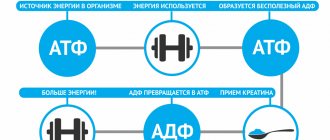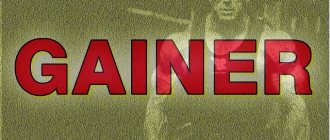Weighted push-ups to gain muscle mass are an excellent exercise to do at home. It is also suitable for athletes of various sports disciplines, for example, team sports or martial arts. Even without additional weight, push-ups are an excellent exercise that is used in the training program not only by athletes, but also by the military. In my opinion, men and women should incorporate them into their workouts aimed at developing not only body weight, but also losing weight or maintaining physical fitness.
Benefits of weighted push-ups
- With minimal risk of injury, the athlete provides the muscles with optimal load for hypertrophy.
- A simple and effective exercise that can quickly develop muscles.
- Relevant for athletes of various sports.
- Can be performed in the gym, at home, and also on the street.
- Develops symmetrical muscles.
- Helps increase muscle volume and strength.
Which weighting option to choose
In increasing degrees of difficulty, weights for push-ups look like this:
- Place your feet on an elevated platform
This is the easiest way to make push-ups more difficult. True, it won't last long. The body will get used to this option, because although it is a little more complicated, it is still performed with your own body weight.
- Use a rubber band
The next method is to use fitness rubber with varying degrees of resistance.
This option has its pros and cons. Among the disadvantages is that the rubber constantly slides off the back and puts a lot of pressure on the muscles, which distracts attention from the movement itself.
Over time, the rigidity of the rubber is no longer sufficient for work in the strength format, but it is successfully used to develop strength endurance or improve speed characteristics (high-repetition mode, 20 repetitions and above).
- Place the weight on your back
The most popular and, up to a certain point, the most effective way to make push-ups more difficult is to place a weight on your back.
To do this, use a barbell disc, a kettlebell, a dumbbell, a water bottle, a heavy backpack, etc.
The big disadvantage of this option is the unstable position of the load on the back, which tends to fall to the floor.
A prerequisite for such push-ups is the help of an assistant who will support the weight while you do push-ups.
- Fitness vest (body armor)
This method could be called ideal, but such vests are quite rare both in gyms and at home. In addition, they also have a weight limit.
Sports equipment options
Weighted push-ups can be performed with several types of sports equipment. The best option is to do push-ups with a fitness band. Firstly, this option does not require outside help, and secondly, it allows you to select the best load. Also, this sports equipment, in fact, has no weight and does not take up much space, so you can even take it on the road. And with its help you can do a whole range of exercises for the whole body.
But if there is no fitness band, you will have to use either a weighted vest, which is also considered a good option for doing push-ups, or use a weighted disc. In the latter case, the work will require a partner to place and remove the weight, which should be on the shoulder blades during push-ups. This option is very inconvenient and difficult, since a slight displacement of the disc will create an asymmetry in the load and greatly reduce the effect of the workout.
Push-ups with a weighted vestDisc push-ups
How to do push-ups at home to gain weight
A training program plays an important role in achieving progress in gaining muscle mass. The ideal option is to visit the gym and train with weights. But at the initial stage, you can achieve significant results at home.
The training process should include all major muscle groups. If the goal is to gain mass, then a three-day split would be ideal, in which the muscles of the body are divided into three conditional groups, and every day one of them is worked on. For example, on the first day the stomach and back are trained, on the second - legs and buttocks, and on the third - arms and chest. It is impossible to pump up all the muscles solely with push-ups, but you can use them to work out a fairly large percentage of the muscles.
The exercise is accessible to most athletes, as it does not require special equipment or special skills.
When performing push-ups, the following muscles are involved:
- chest; the main load with the standard placement of the arms falls on the chest, but the emphasis can be changed by changing the position;
- triceps, especially with narrow arms;
- shoulders; the greatest load falls on them if you place your hands wide;
- biceps, but the load is insignificant;
- back, especially the top.
The greatest load falls on the pectoral and triceps
Obviously, the greatest load falls on the chest and triceps muscles. This should be taken into account when creating a training plan.
Doing push-ups has a number of benefits:
- push-ups can be done at home, no equipment required;
- the risk of injury from movement is minimal;
- several muscle groups work at once;
- you can change the load by changing body position.
Push-ups are an excellent exercise for gaining muscle mass if the athlete follows additional recommendations - adding other exercises, maintaining a daily routine, eating right, minimizing stress and providing conditions for the body to recover.
Execution technique
So, I propose to consider the option of doing it with a fitness tape, which will provide both comfort and high training results.
- To perform an exercise with a fitness tape, you need to place it across your back so that it passes at the level of the rhomboid and teres muscles.
- Hold the tape with your palms, pressing on it with your own weight. To create maximum effect and better load the target muscles, the starting position should be at the lowest point of the amplitude.
- Please note that the fitness tape in this position should already be taut. Performing the exercise is absolutely the same as in the version without sports equipment.
- By straightening the arms at the elbow joints, the body rises upward as you exhale. The movement occurs without jerking, smoothly and concentrated. The slower the movement is performed, the more effective the training will be. At the lowest point of the amplitude, you should not linger for a moment, but immediately return upward.
What muscles work in the exercise
Push-ups with additional weight are basic multi-joint exercises. This means a large number of muscle groups involved in the movement:
- Chest, shoulders, triceps - the main moving muscles
- The latissimus dorsi muscles receive indirect dynamic load
- Forearms actively work in static mode
- The rectus abdominis and psoas muscles stabilize the position of the body. Just like the forearms, they are loaded statically
- The buttocks and hips are indirectly included in the work in isometric mode
Recommendations
- Training to develop mass when using weighted push-ups should begin with a warm-up.
- The first approach should be performed without weights. You should perform as many repetitions as possible in the first approach, and then begin performing the exercise with weights.
- Depending on the ability to create the required weight, the number of repetitions will depend. Ideally, the selected weight allows the athlete to perform 8-12 repetitions.
- If the weight is not enough, you will have to do more repetitions, which will reduce the effectiveness of the exercise.
You should also take into account one nuance that I recommend introducing into training to increase strength endurance and develop strength. However, this technique does not affect body weight and muscle mass. So, the last approach in the exercise must be done to failure. There should be five approaches in total.
Reverse push-ups to work triceps
The essence of the exercise is that the hands of the practitioner are not positioned as usual in front of the athlete during push-ups, but behind him, hence the name. There are several types of this exercise that complicate or simplify it, help to “load” the triceps (triceps muscle) a little more, or for beginners, on the contrary, reduce the load and distribute it evenly over the body.
What muscles work?
- With reverse push-ups, most of the load falls on the triceps, on all three heads of the muscle - lateral, medial and long.
- To a lesser extent, but also quite well, the pectoral muscles and anterior deltoids are tensed.
- The back muscles help - the latissimus and rhomboid.
- The work of the elbow and shoulder joints is also important.
Muscles worked during reverse push-ups
The muscles most actively involved in the work are the triceps, chest and deltoids.
The muscles most actively involved in the work are the triceps, chest and deltoids.
Training program
| Types of push-ups | Approaches | Repetitions |
| 1. With cotton | 1 | To failure |
| 2. With feet on fitball | 1 | To failure |
| 3. With weight transfer on one hand | 1 | To failure |
| 4. On an inclined surface with a reverse grip | 1 | To failure |
| 5. Weighted | 1 | To failure |
| 6. Offset to the side | 1 | To failure |
| 7. Spiderman push-ups (Spiderman) | 1 | To failure |
| 8. On a surface with a negative slope | 1 | To failure |
| 9. With cross lift | 1 | To failure |
| 10. Shoulder Touch | 1 | To failure |
| 11. With a pause | 1 | To failure |
| 12. With a wave of your hand up | 1 | To failure |
| 13. On fists | 1 | To failure |
| 14. With a bend in the lower back | 1 | To failure |
| 15. On an inclined surface with a wide grip | 1 | To failure |
| 16. On one leg | 1 | To failure |
| 17. Narrow grip | 1 | To failure |
Common mistakes
This is considered to be a simple exercise. But for some it is not suitable anthropometrically. If a person has a long back and fairly short hips, he will have to either put standard fitness benches on stands, or refuse to do it, since it will be difficult to find a comfortable position in this exercise.
Usually people move their pelvis away from the bench, or make a movement by initially placing their hands at different distances from the pelvis. Both of these do not allow you to optimally load the triceps in order to train them well. Otherwise, it’s difficult to make any serious mistakes here. This movement is given to beginners because if discomfort or pain occurs, they can simply stop, and they will not have to jump off the bars or return unstable weight to the racks.
Pain in elbows and shoulders
Pain in the elbows and shoulders is a fairly common phenomenon in sports. It can occur without any connection at all with this exercise. Elbows can start to hurt, for example, due to the significant training volume of squats, when the weight puts pressure on the ligaments while being on the back. And aggravation occurs in this simple auxiliary exercise.
Technically, in push-ups from the bench there is no excessive angle or anatomically unnatural movement in the elbows; it is quite difficult to injure them here. But if your elbows are already hurting, you should abandon working with weights in favor of first complete rest, and then training in less stressful triceps-isolating movements, for example, with extension of the arms at the elbow joint on a block.
If you have pain in your shoulders, first you need to check how far they are tilted forward. There is such a violation of posture, in which too strong a trapezoid, as it were, pulls the shoulders towards the chest, and a person simply cannot do push-ups without overloading the anterior delta. The good news is that the pain is caused by muscle tension, the bad news is that you need to change the technique of performing all the exercises and monitor your posture in life; most likely, the trapezoid “works” here too.
Incorrect hand placement
Purely physically placing your hands too narrow will not work; this value is limited by the width of the athlete’s pelvis. But placing your hands too wide can lead to errors during the movement itself. If you place your palms wide, your elbows will point out to the sides, this will overload the elbows and shoulders, and take the target load off the triceps.
You need to choose a position for your palms so that your pelvis does not interfere with the movement and the exercise is comfortable.
“Stand” at the top of the exercise
This is a fairly common technical mistake when a beginner simply stands at the top phase of the exercise and does not try to perform the movement smoothly and dynamically at the same time. During the stance, the working muscle is “unloaded” and a significant part of the body weight falls on the athlete’s wrists. This is especially not welcome if you do push-ups with weights. In any case, this technique does not help in the development of triceps.
Training an injured athlete
Injuries that have already occurred require special attention when creating a plan. For an athlete with joint and ligament injuries, the training plans of “conditionally healthy” people are not recommended. When it comes to elbow and shoulder injuries, it is best to only perform cable extensions with light weights rather than push-ups. The static load on the joint may be too high.
When returning to training after forced downtime, you need to start doing push-ups without weight, even if you previously used additional weights. By gradually entering a training regime, the athlete protects himself from new injuries.
Moderation in weight training
It is necessary to use additional weights, but there is no point in replacing the bench press with this movement. The exercise is not intended to develop pure strength, so you should not collect all the plates in order to provide yourself with a load. When working with weights, you need to be careful. If necessary, load and “unload” the pancakes with the help of a belayer.
Bars - in a separate training cycle
Exercises on the uneven bars develop the triceps and pectorals well, but overload the shoulders. If you combine this movement and the parallel bars in one plan, you can get injured in the anterior deltoid and joint when the load “accumulates.” You should avoid combining both exercises on the same day, or even on the same plan if the athlete's priority is heavy bench press.
Check the benches in advance
They must be stable and not slip on the floor. It makes sense to additionally fix them on the sides using weights or dumbbells if we are talking about ordinary fitness benches.
Triceps on the bench Errors and technique
